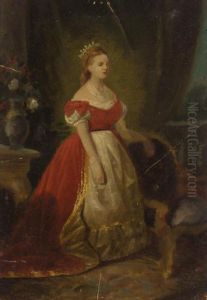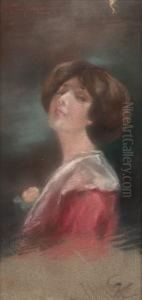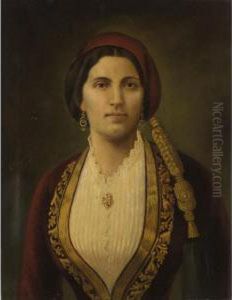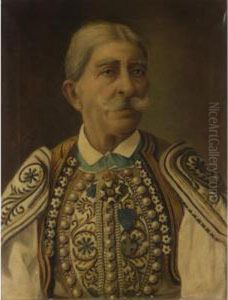Spyridon Prosalentis Paintings
Spyridon Prosalentis was a prominent Greek painter born in 1830 in Corfu, Greece. He is often recognized as one of the most significant artists of the 19th century in the Greek art scene, particularly known for his contribution to the Heptanese School of painting, which was the leading art movement in the Ionian Islands during that time.
Prosalentis came from a family with a strong artistic tradition. His father, Pavlos Prosalentis, was also a notable painter, and it was under his guidance that Spyridon began his art education. He furthered his studies at the Royal Academy of Fine Arts in Naples, Italy, which was a common destination for Greek artists in that era due to the strong cultural and historical connections between Italy and the Ionian Islands.
After completing his studies, Prosalentis returned to Corfu where he became a central figure in the local art community. He was deeply influenced by the Italian Renaissance and the classical traditions, which is evident in his work. His paintings often depicted historical, mythological, and religious themes, executed with precision and attention to detail. He was also known for his portraits, which were praised for their realism and psychological depth.
During his career, Prosalentis was not only a painter but also contributed to the development of fine arts education in Greece. He played a key role in the establishment of the Corfu School of Arts, where he also taught, nurturing the next generation of Greek artists. His commitment to education and the arts made him an influential figure in both the cultural and academic communities on the island.
Spyridon Prosalentis passed away in 1895, leaving behind a legacy that would inspire many Greek artists to come. His works are considered to be an important part of Greek cultural heritage and are displayed in various art galleries and museums across Greece and beyond. Prosalentis's dedication to his craft and his role in the propagation of the arts in the Ionian Islands cemented his status as a key figure in the history of Greek art.







